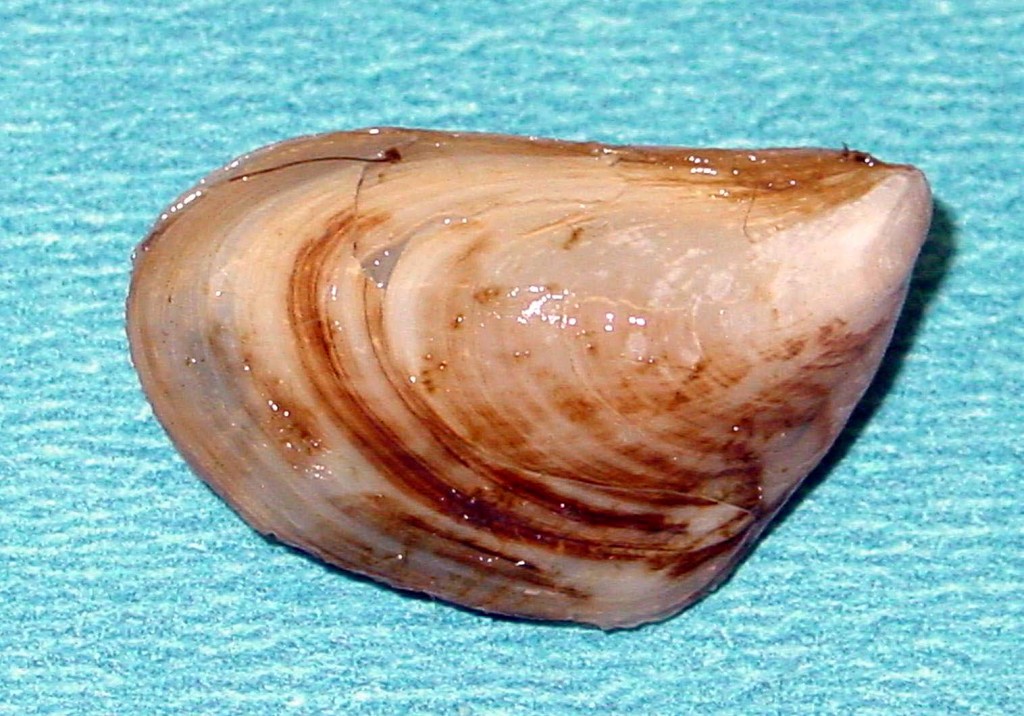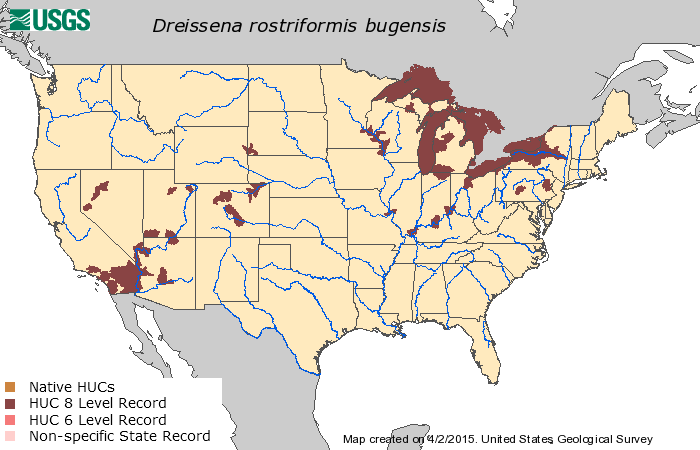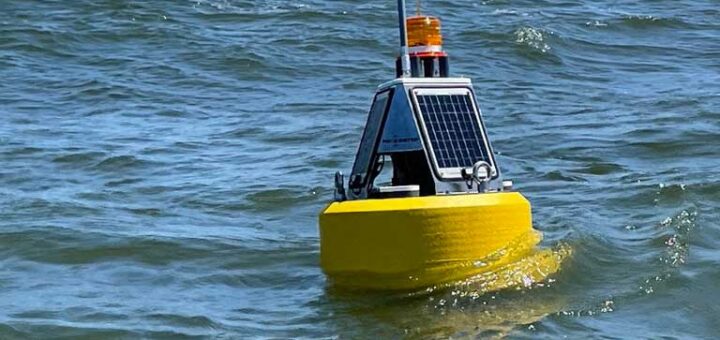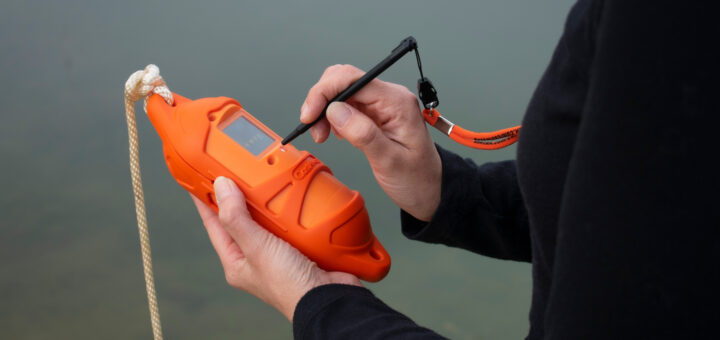Quagga Mussel
Daniel Kelly | Fondriest Environmental
Quagga mussels are native to Ukraine, and are believed to have been transported to the United States via the ballast water of sea-faring ships. In the Great Lakes, they were first spotted in 1989, and have spread rapidly since their introduction.
From early 2000 to 2010, quagga mussels spread throughout all of Lake Michigan, according to NOAA’s Great Lakes Environmental Research Lab. During that time, the rise of quagga mussels coincided with the fall of Diporeia populations, a shrimp-like creature native to the Great Lakes. Quagga mussel densities reached highs of 35,000 per square meter at that time.

A quagga mussel. (Credit: U.S. Geological Survey via Wikimedia Commons User Eugene van der Pijll, Public Domain)
Part of the reason that quaggas are so destructive to ecosystems is their abilities to steal food away from organisms, like Diporeia, that make up the base of food chains. Quagga mussels are filter feeders, living off of particulate matter that they pull in through a shell cavity. Capable of running through more than a liter of water each day, every quagga mussel feeds on things like phytoplankton, zooplankton and algae that other organisms need to survive.
It follows that as quagga numbers go up, the amount of food available for other creatures goes down. There is also evidence that increases in quagga mussel populations are linked to decreases in the production levels of phytoplankton. Taken together, the impacts of less phytoplankton and fewer small creatures mean less food availability for fish in the Great Lakes. Fish health metrics have suffered, scientists say, and fish catches have become less valuable than they otherwise would be with the overall drop in fish biomass.
Quaggas are now found in all of the Great Lakes and have out-competed zebra mussels in many areas. Across the United States, quagga mussels have spread to many areas along the Mississippi River, near Southern California and parts of the West.

A map showing the distribution of quagga mussels across the continental United States. (Credit: U.S. Geological Survey)
Prevent Its Spread
To minimize the spread of quagga mussels, pay special attention to boats and other gear used in waterways that could harbor them. After every outing, make sure to clean and disinfect equipment to make sure that there are no visible plants, fish or animals, including quagga mussels, stuck to them.
Drain all ballast water from boats, including live wells for fish, and water ski equipment before leaving a waterway. This makes sure that whatever got aboard goes back to its native waters. Take advantage of areas set aside by state agencies for discarding invasive plants – these are often clearly marked. Also allow boats seven days to fully dry before use in another waterway.
Sources:
- https://seagrant.umn.edu/programs/healthy-coastal-ecosystems-program/aquatic-invasive-species-campaigns
- https://www.seagrant.wisc.edu/our-work/focus-areas/ais/invasive-species/invasive-species-fact-sheets/mollusks/quagga-mussel/
- https://www.dec.ny.gov/animals/48221.html
- https://www.invasivespeciesinfo.gov/aquatic/invertebrates/quagga-mussel
- http://cisr.ucr.edu/quagga_zebra_mussels.html
- https://www.glerl.noaa.gov/pubs/brochures/archive/20ZMresearch.pdf
- http://nas.er.usgs.gov/queries/FactSheet.aspx?speciesID=95









